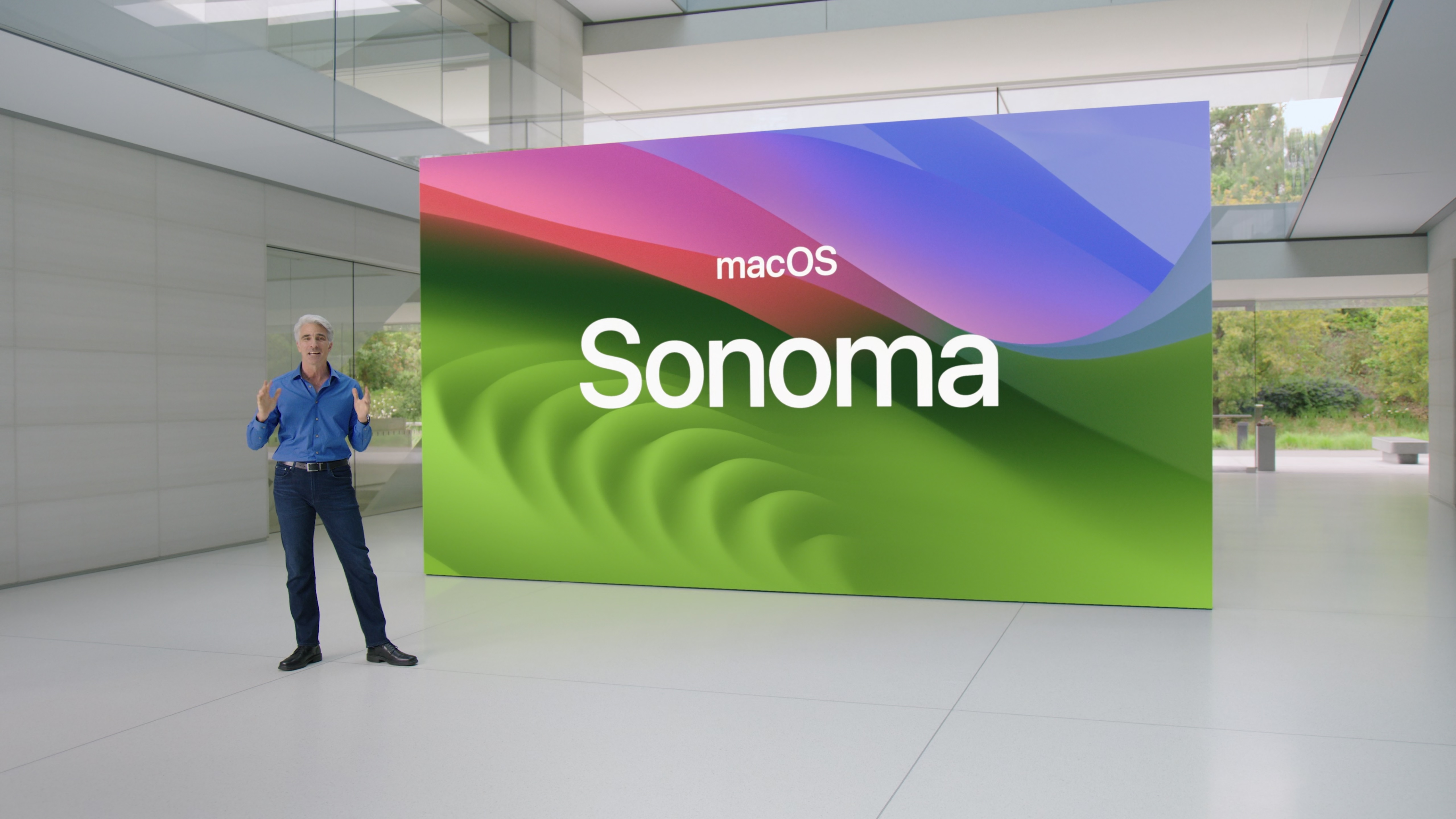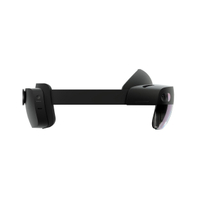Apple's AR Vision Pro headset isn't the HoloLens competitor I thought it was going to be
Apple's new headset takes aim at Meta and HTC, not Microsoft.
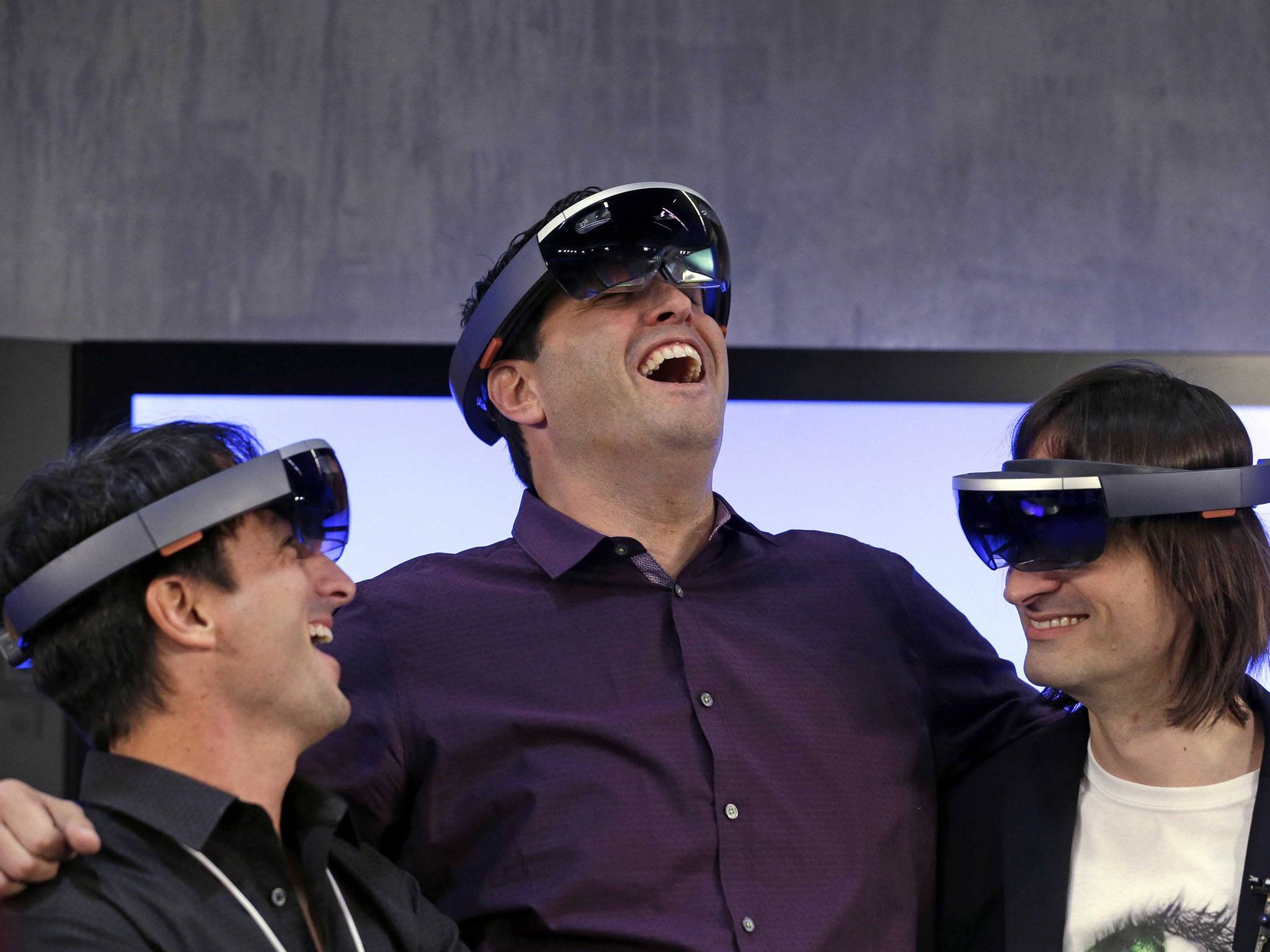
Apple just unveiled the Vision Pro, a device that Apple CEO Tim Cook prefaced by calling augmented reality (AR) a "profound technology," setting the wheels in motion for its first wearable headset. But the product Apple announced isn't an AR headset the way you might be thinking. It's nothing like the HoloLens, which I'd consider to be "true AR" with a passthrough pane.
Instead, it's more a virtual reality (VR) headset that simulates AR experiences using cameras and displays the real world onto a pair of screens, which is sometimes known as augmented virtual reality (AVR.) That's okay, and I'm sure it's going to be the best AVR headset ever, but that's not a true HoloLens competitor in my eyes.
I am a huge fan and advocate of AR and VR. I love VR for what it is, and I'm hopeful that AR will become a reality in the near future. I want true AR to be a thing, and I'd be more than happy for Apple to get there first if that's what it takes. But the Vision Pro is a VR headset. Heck, call it an MR headset for all I care. But it's not a consumer version of HoloLens. Here's why.
Projecting the world onto 2D screens isn't augmenting reality, it's virtualizing it
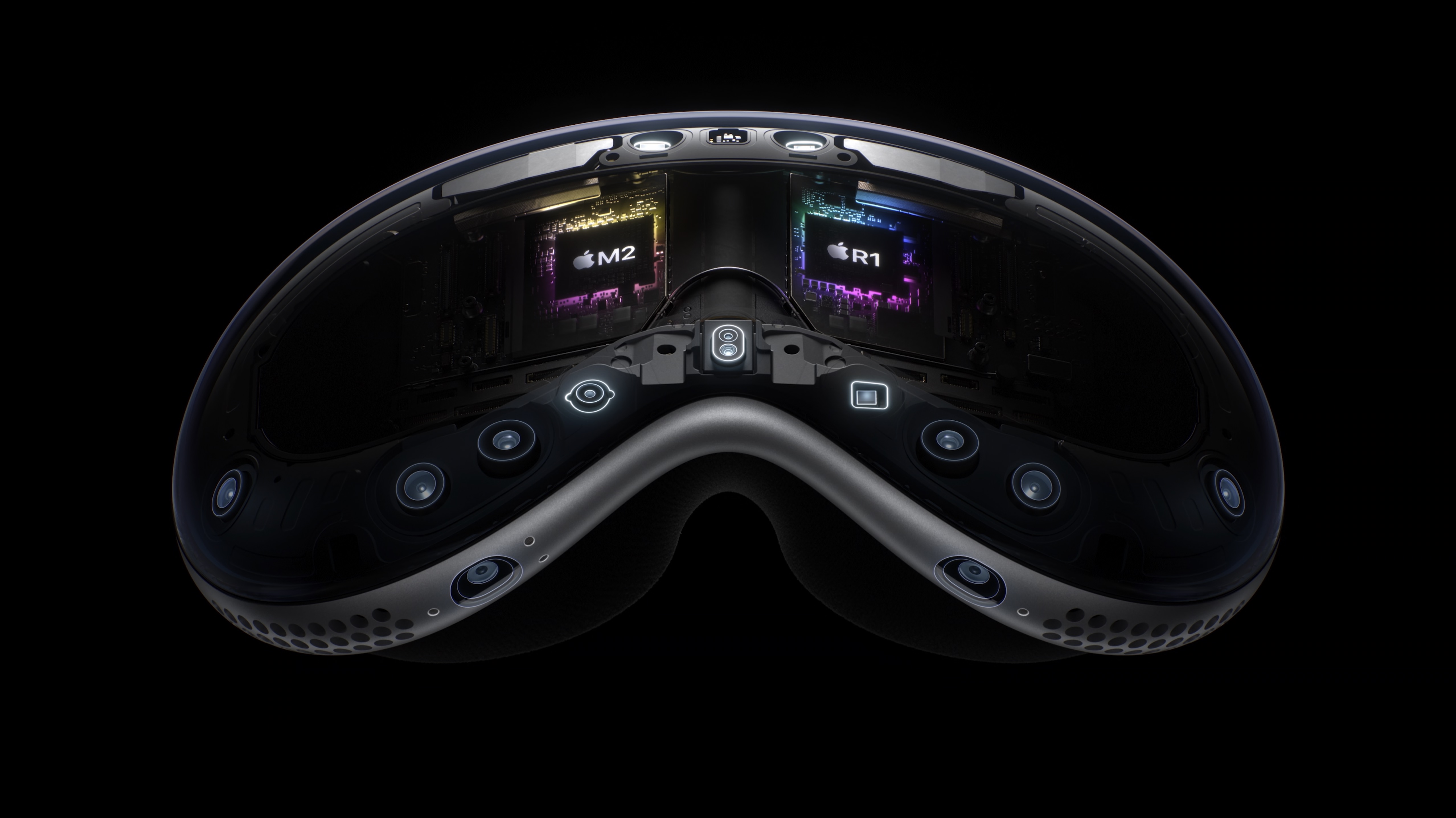
To kick things off, viewing the world through a pair of 2D screens, however bright, sharp, or fast they are, isn't able to replicate the real world one-for-one. Vision Pro will almost certainly have a FOV that's less than your eyeballs so that you will see the edges of the displays in your peripheral while in the VR headset.
Viewing the world through a pair of screens, captured by the 12 cameras Apple is using, is not going to be an ideal way of actually experiencing life. Apple did a lot to present Vision Pro as a headset you'll enjoy wearing outside or when hanging with friends, which is laughable for an enclosed headset.
A true AR headset like HoloLens doesn't use screens to augment your reality. These headsets (and glasses) achieve AR experiences by projecting virtual elements onto a transparent or translucent pane that enables you still to view the real 3D world with your eyes.
This is an essential distinction because viewing the world through a pair of screens removes important things like true depth and focus. It becomes much harder to determine how far away things are when looking at them through two flat screens. With HoloLens 2, you're still able to determine things like depth and focus easily because two screens don't impair your vision.
Get the Windows Central Newsletter
All the latest news, reviews, and guides for Windows and Xbox diehards.
Of course, I'm not saying wearing a HoloLens is an ideal way of experiencing life, but I am saying it's closer to that end-goal of an ambient AR headset than the Vision Pro is.
VR headsets are inherently anti-social, and that doesn't change with Vision Pro
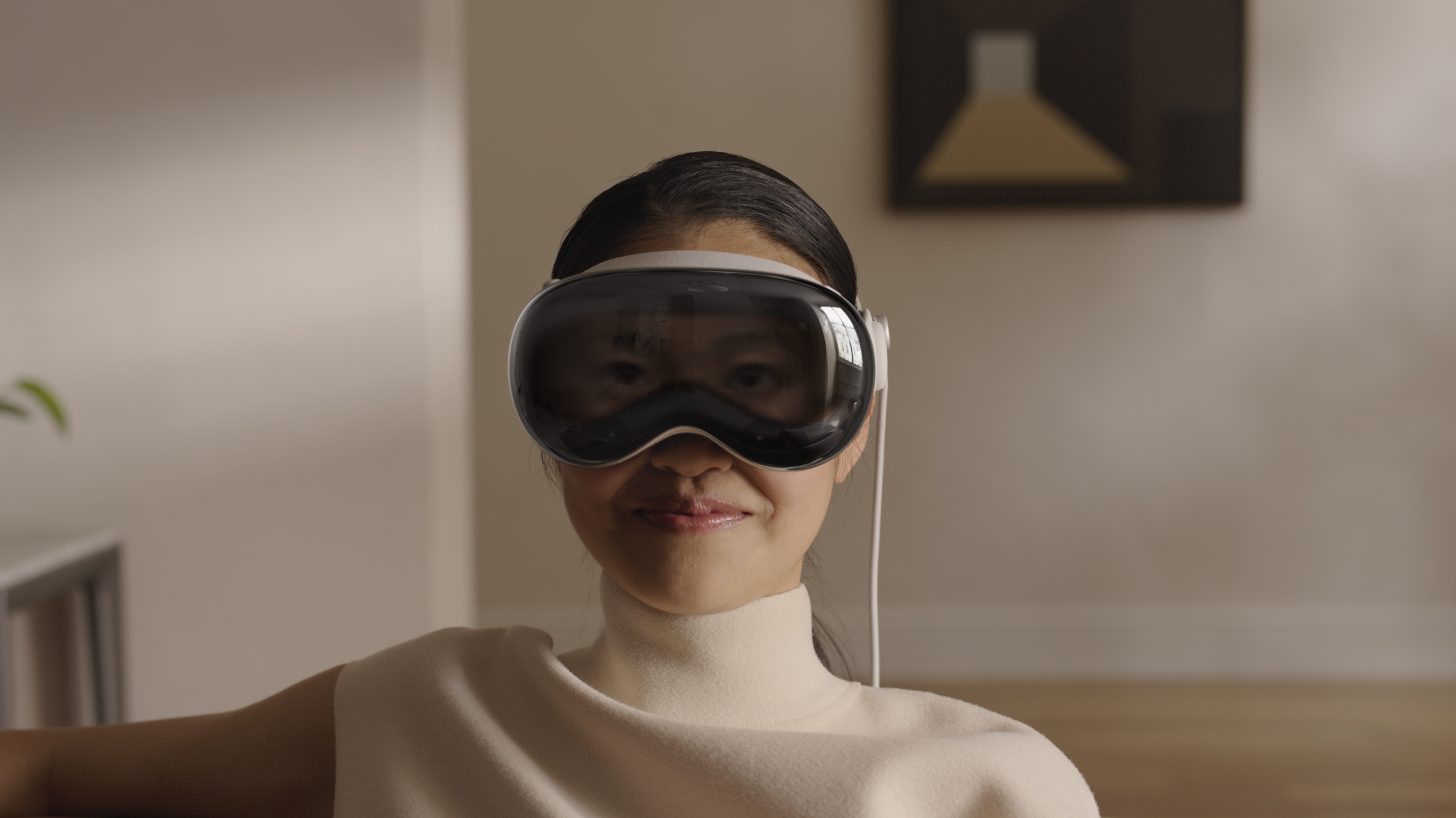
VR headsets are anti-social in nature. When wearing a VR headset, the world is blocked out from you, and you are blocked out from the world. This doesn't look to have changed with Vision Pro. Wearing a VR headset is like wearing a pair of headphones; socially, others understand not to disturb you unless it's crucial.
If you've ever come across someone who insists on speaking to you with their headphones in, it comes across as a little rude, right? I always try to take at least one headphone out if someone is trying to speak to me, even if I don't have any music playing, so they know that I'm giving them my attention.
Now imagine this scenario but with a massive face-covering headset on. You wouldn't try to seriously conversate with someone wearing a Meta Quest or HTC VIVE, yet Apple thinks you'll love using the Vision Pro in the real world, surrounded by people not wearing one.
Just imagine trying to talk to a friend or loved one about life while they're wearing a Vision Pro on their head. This would be so impersonal and frankly rude of the person wearing the headset. Apple is trying to mitigate this by including a screen on the front that virtualizes your eyes, and that's frankly a mockery.
Vision Pro is anti-social, and that's a problem for most VR headsets.
I don't know about you, but I'd feel pretty damn stupid trying to talk to someone while looking into their 2D virtualized eyes. It's a literal social barrier between you and the person you're interacting with, and it's just not going to fly in the real world like Apple seems to think it will.
An actual AR headset suffers from these sociable issues much less. Because an AR headset is open, with a direct view of the real world at all times, even when the headset is off. Talking to someone wearing something like a HoloLens 2 is much less awkward for both parties involved, and this is even less of a problem with AR glasses.
In Apple's unveiling video for the Vision Pro, that front display with the eyes makes it seem like the headset is translucent, which would make it a true AR headset. It wasn't until about 15 minutes into the presentation that Apple revealed it was a screen. If you've been following the rumors, you probably already knew that though.
If VR headsets make you sweaty or claustrophobic, Vision Pro likely won't change that
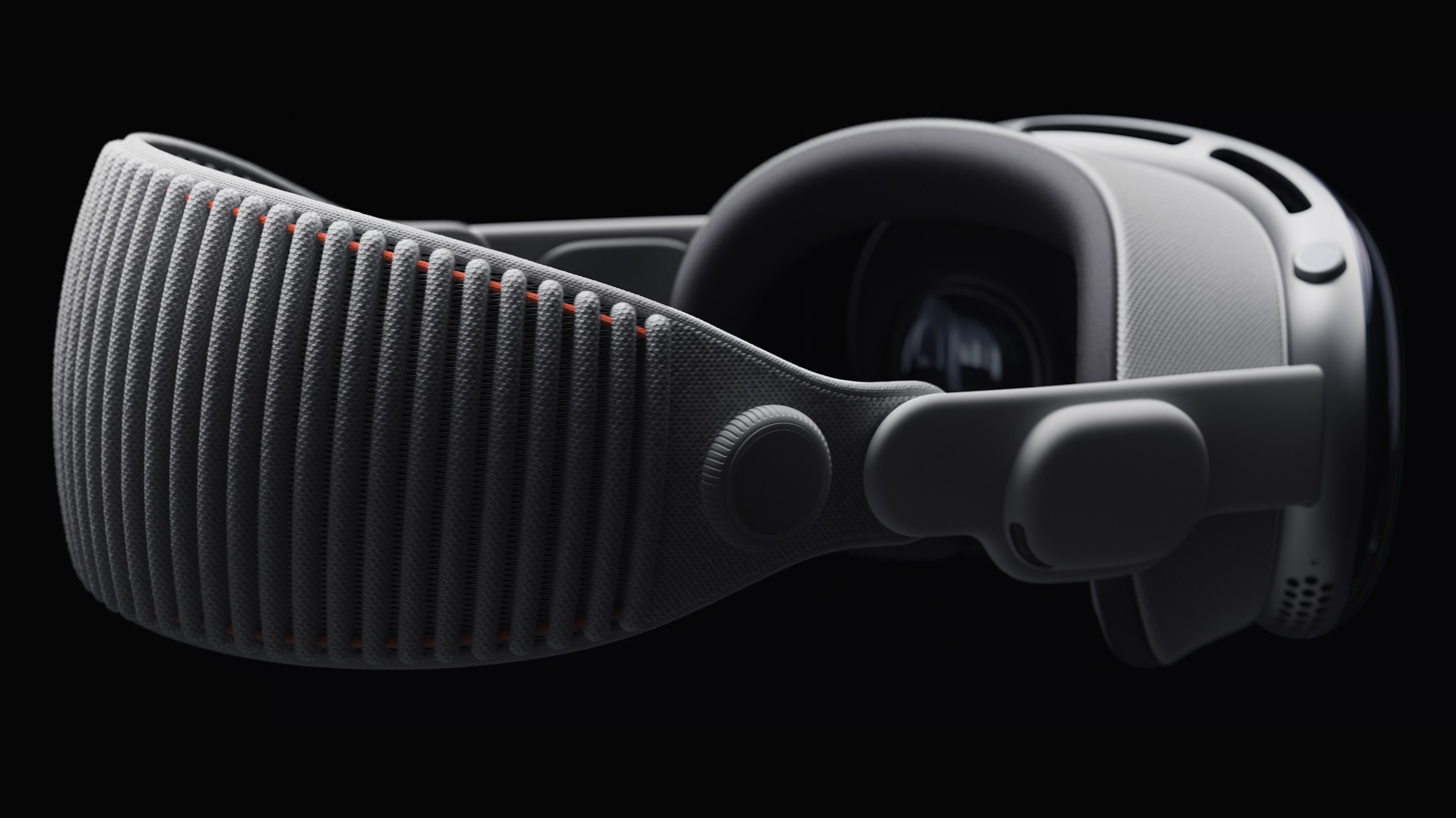
As mentioned, the Apple Vision Pro will simulate your reality by displaying the real world, using cameras, onto two 2D screens. To achieve this effectively, the area where the headset rests on your face will be enclosed to ensure the displays come across as bright as possible.
This means the headset will be resting right up against your face, and if you've used any VR headset before, you'll know this usually ends up with you being quite sweaty around the eyes after half an hour. This isn't something that happens on devices like the HoloLens 2, which don't rely on being enclosed to function correctly.
HoloLens 2 doesn't even rest on your face because it doesn't need to. The device is light enough to hang from the headband, and because it's an actual AR headset, it doesn't need to block out the real world around your peripheral view to accurately display the world in the visor because you can already see the real world through it.
Plus, if you're claustrophobic, I already know the idea of suffocating the top half of your face in a VR headset isn't appealing to you, and being able to see the edges of the displays in your peripheral likely won't help either.
Apple Vision Pro is going to be an amazing VR headset, with great augmented experiences
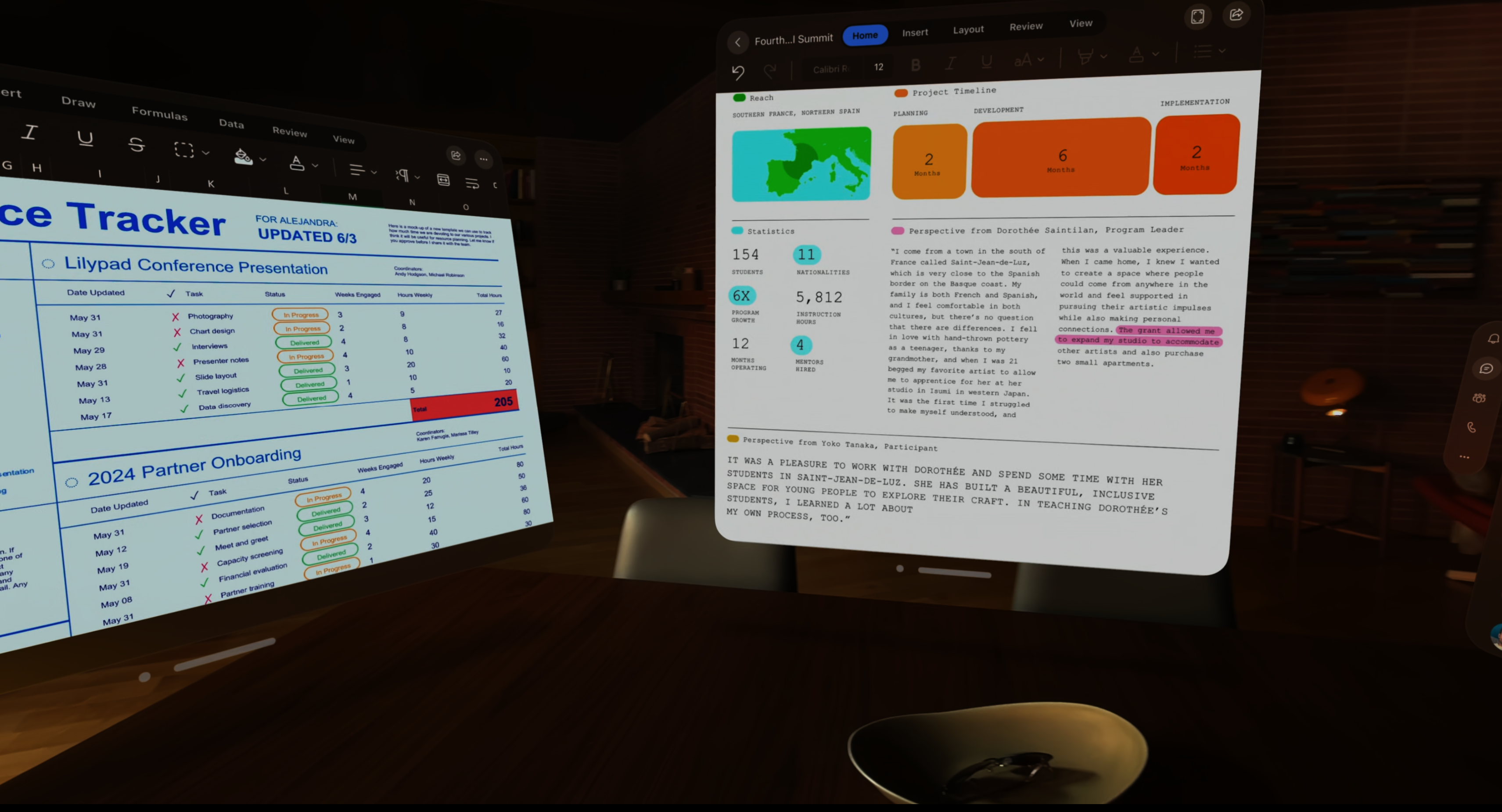
Let me clarify: The Vision Pro will likely be the best VR headset ever to grace the planet. Its high resolutions screens are going to be so incredibly immersive, and its FOV will likely rival or even best VR headsets on the market currently. It's going to make VR headset makers up their game.
I don't have a problem with Vision Pro as a VR headset. My problem lies with how Apple is trying to position the device as a true AR headset, which it isn't. Just because it can simulate an augmented space doesn't make it a good AR headset because there's so much more to a good AR headset than simply displaying the real world in front of you and putting virtual elements on top of it.
A good AR headset isn't achievable when you shove two screens in front of your eyes and enclose half your face to use it. Half the point of AR is the ease of use and the open-nature of it. You don't feel restricted by wearing AR headsets. The same cannot be said with VR headsets.
Vision Pro is a stepping stone to a true AR product, but we're not there yet
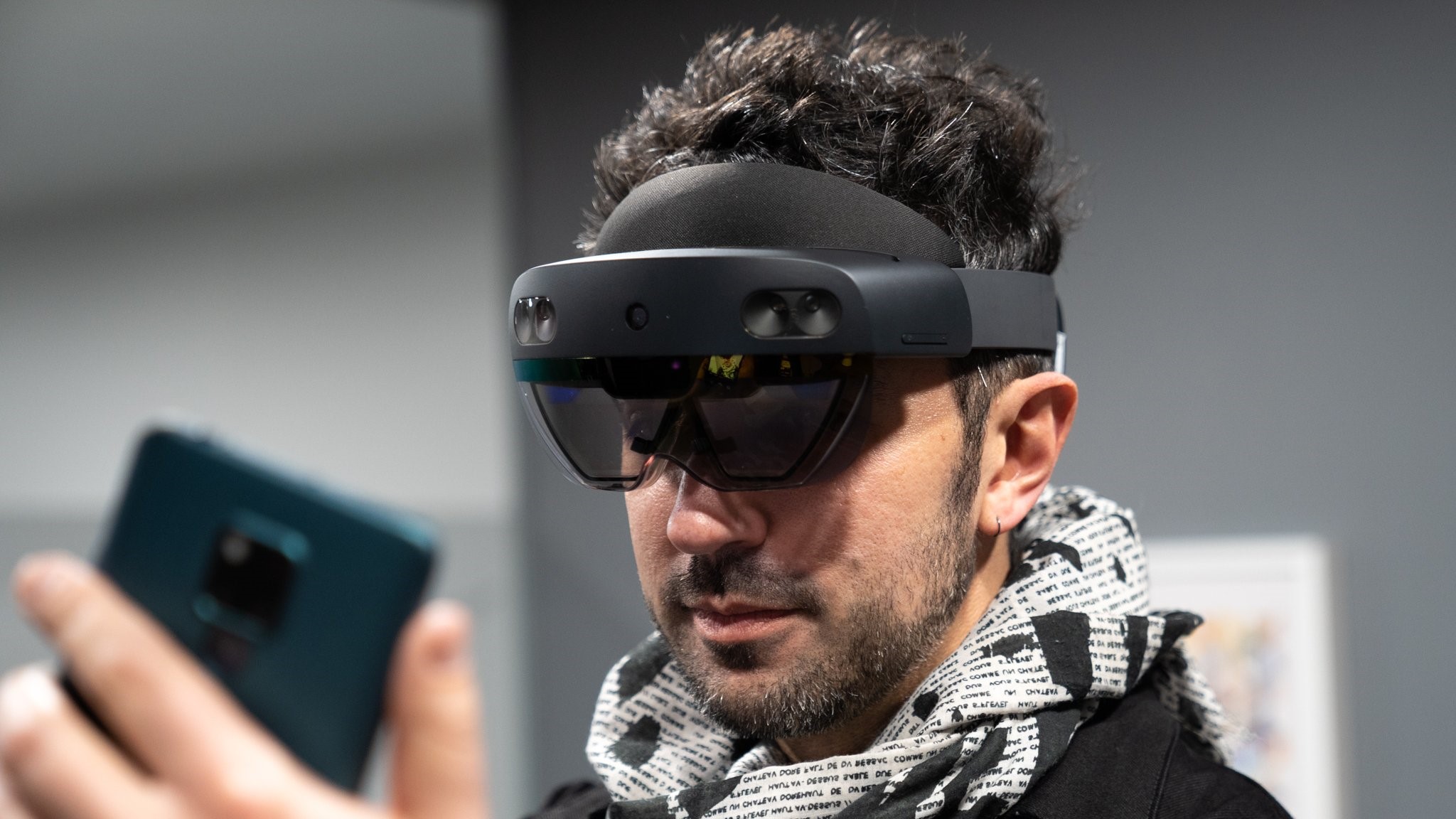
I think it's clear that the Vision Pro isn't the device Apple wants to make, but it's a stepping stone to something much more sociable, personable, and mobile. A true AR headset, one that doesn't rely on enclosed 2D screens to simulate the real world, is the AR device I'm hoping Apple is one day able to make.
We're already halfway there with devices like the HoloLens 2, which project virtual elements onto the real world without forcing you to view the world on 2D panels. But the HoloLens 2 is far from the perfect AR headset too. While it's certainly less anti-social than the Vision Pro, it's still too big to wear when out and about.
If I were to compare the HoloLens 2 with my headphones analogy from earlier, I'd say the HoloLens 2 represents pulling one headphone out to conversate with somebody. It's better, but it's not as good as giving someone your undying attention. That would be the equivalent of a pair of every day eye glasses.
With that said, HoloLens 2 has proven itself acceptable to use in the workplace in scenarios such as meetings or chatting with colleagues with the headset on. At no point does wearing a HoloLens feel like I'm locked into a headset. Because of this, I can't imagine the Vision Pro being an acceptable device to wear at work in a professional setting, let alone with friends in a social setting.
So, for now, enjoy your $3,500 VR headset, world. I'm still waiting for the first good consumer AR headset.
The Microsoft HoloLens 2 is an enterprise AR headset designed for front-line workers. It features an ARM processor, holographic capabilities, and can be controlled using your hands.

-
Ron-F I disagree with the main point of the article. Vision Pro is a direct competitor to HoloLens and it is a an AR machine which is capable to operate in VR too. The AR capabilities was central to Apple presentation. The whole time we were reminded how it did not alienated the user from reality, how it would show people that approach the user and how the user face would appear in the googles to make clear he or she were not immersed in the VR space. Zac correctly points out that Apple is projecting an image to the user, instead of of the HoloLens method, in which the visor is transparent. To me, this is a small detail that do not negates the use case of the device.Reply
In any case, this debate is pointless to me. Considering the price Apple is asking, I don't see any justification to be used outside the corporate market and I cannot envision how I could justify one for work. -
Simon Lewis2 Reminds me of Steve Baulmer scoffing at Apple's first attempt at a phone... It's gonna fail because it's not like a proper phone with a keyboard!Reply -
PaperPirateMonk I fully agree it's a move away from AR compared to the Hololens. I'm still charmed how tilt5 showed that the social and AR aspects do not require high res or the most powerful technology.Reply -
R K7 Reply
Mobile phones were ubiquitous when Baulmer made that comment. No one is using VR/AR despite it being on the market for years. Tim Cook just signed his resignation letter.Simon Lewis2 said:Reminds me of Steve Baulmer scoffing at Apple's first attempt at a phone... It's gonna fail because it's not like a proper phone with a keyboard! -
R K7 Reply
No one in corporate America is going to spend money on something that add zero value to a meeting with co-workers or clients. Before we start the meeting let's put on these ski gaggles... LolRon-F said:I disagree with the main point of the article. Vision Pro is a direct competitor to HoloLens and it is a an AR machine which is capable to operate in VR too. The AR capabilities was central to Apple presentation. The whole time we were reminded how it did not alienated the user from reality, how it would show people that approach the user and how the user face would appear in the googles to make clear he or she were not immersed in the VR space. Zac correctly points out that Apple is projecting an image to the user, instead of of the HoloLens method, in which the visor is transparent. To me, this is a small detail that do not negates the use case of the device.
In any case, this debate is pointless to me. Considering the price Apple is asking, I don't see any justification to be used outside the corporate market and I cannot envision how I could justify one for work. -
RoguePine very well said. I think AR is the future of mass market not VR and Microsoft has gone the right way but a bit slow. because AR doesn't need screens and shows the real world around you, needs less hardware so it will be more portable and if there's more time and effort they will become much smaller and more portable and eventually at the size of a normal eye glasses just like the forgotten Google Glass. if Microsoft dedicate more time and research to HoloLens maybe they can steal the show this time. the only problem will be the OS. since most people use Android and iOS on the go at this time it would be a wise move to implement Android as the OS at first and working with Google so that users can install their favorite apps and games more comfortable and gaining the mass market. then deciding to stay with it or move to variations of WindowsReply -
Cmndr_Bytes Not much of a competition when I have not a heard a peep from MS about Hololens in quite some time. I don't think Apple's VR will do much due to price point, but we all know Apple is a marketing machine unlike MS who couldn't devise a marketing plan to sell water in the desert.Reply
I really wanted a hololens, but i don't see them making one for consumers. While it seems like a real opportunity for MS I doubt seriously they will move on it. -
finbaar Given the price of this headset and the current uses available for it I can't see it being used outside business. Cheaper headsets are being used more in gaming - look at one of the Occulus headsets, it's sold as many as the latest gen XBox. But why would I need to spend money on one of these? Why would anyone who doesn't need it for work of gaming? It doesn't replace my phone and I can't "show it off" like a smart watch.Reply -
Rocwurst I manage a lab with a dozen Microsoft Hololens 2 headsets (which cost us $3,500 each to buy last year) and I can tell you the Apple Vision Pro does indeed compete with and yet is light years ahead of Microsoft’s AR attempt.Reply
I am getting exactly the same feeling I had when the original iPhone was released when at the time I was on my 3rd expensive Windows Mobile PDA phone.
Yes, My O2 XDA II had a 3.5” touchscreen like the iPhone, but it was horrifically clunky and low tech in comparison to the multi-touch, capacitive screen and elegant overall vision of the iPhone.
The HoloLens 2 is exactly the same - right down to having a clunky Windows Mobile-like interface compared to the gorgeous visionOS of the Apple headset.
The open visor design of the Hololens is its weakest feature as it makes it impossible to use outside in broad daylight as the screens just can’t compete in brightness. It also means the angle of view is terribly constrained with graphics limited to a small box in front of you with none of the immersive wrap-around graphics of the Vision Pro.
Those who have used the Apple headset report it is easily 180 degrees of view extending right out to your peripheral vision. The Hololens in contrast feels like I’m looking through a keyhole at low rez grainy, pixelated graphics from 2 decades ago.
in addition, you have to hold your hands and arms up and point and pinch at objects in front of you getting massive “gorilla arm” fatigue as you try to type or manipulate objects. With the Vision Pro, it is your eyes that are the mouse, moving around the interface instantly with your arms relaxed in your lap or on the table or couch arm rest with just your fingers simply pinching to select and doing short subtle moves to drag. Far quicker and vastly more relaxed.
The HoloLens just doesn’t compare. -
Cmndr_Bytes Reply
And that is MS. You are right. How many times do they lead out of the gate only to stumble or just quit mid-race? Phones, Kinect, HoloLens, Cortana, etc etc.Rocwurst said:I manage a lab with a dozen Microsoft Hololens 2 headsets (which cost us $3,500 each to buy last year) and I can tell you the Apple Vision Pro does indeed compete with and yet is light years ahead of Microsoft’s AR attempt.
I am getting exactly the same feeling I had when the original iPhone was released when at the time I was on my 3rd expensive Windows Mobile PDA phone.
Yes, My O2 XDA II had a 3.5” touchscreen like the iPhone, but it was horrifically clunky and low tech in comparison to the multi-touch, capacitive screen and elegant overall vision of the iPhone.
The HoloLens 2 is exactly the same - right down to having a clunky Windows Mobile-like interface compared to the gorgeous visionOS of the Apple headset.
The open visor design of the Hololens is its weakest feature as it makes it impossible to use outside in broad daylight as the screens just can’t compete in brightness. It also means the angle of view is terribly constrained with graphics limited to a small box in front of you with none of the immersive wrap-around graphics of the Vision Pro.
Those who have used the Apple headset report it is easily 180 degrees of view extending right out to your peripheral vision. The Hololens in contrast feels like I’m looking through a keyhole at low rez grainy, pixelated graphics from 2 decades ago.
in addition, you have to hold your hands and arms up and point and pinch at objects in front of you getting massive “gorilla arm” fatigue as you try to type or manipulate objects. With the Vision Pro, it is your eyes that are the mouse, moving around the interface instantly with your arms relaxed in your lap or on the table or couch arm rest with just your fingers simply pinching to select and doing short subtle moves to drag. Far quicker and vastly more relaxed.
The HoloLens just doesn’t compare.
Had they continued innovating and working on the hololens it could have been a magnificent piece of productive hardware. Instead, we hear about management issues, non-cooperation between teams, Chief officers not realizing the potential... for those of us who want to be in the MS ecosystem they seem to not want our business.
